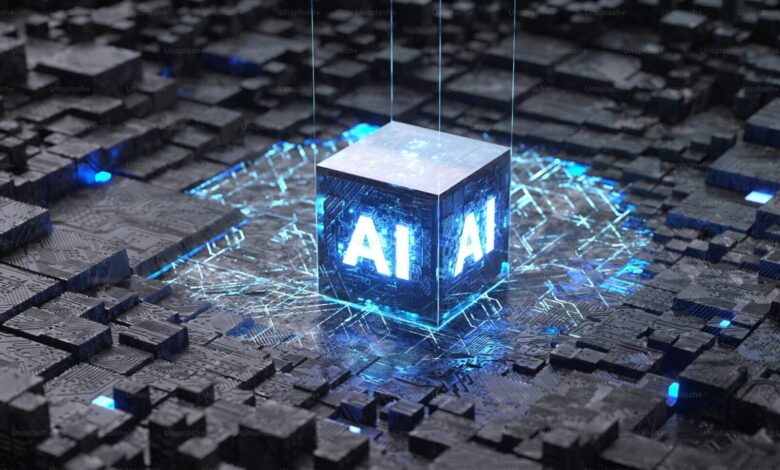WHAT IS ARTIFICIAL INTELLIGENCE (AI)?

Artificial Intelligence is a confusing term we hear about on TV, read about in print publications, or see mentioned online literally every day. It’s the current technology craze that I venture to say very few “regular” people really understand. I found a definition of artificial intelligence in the winter edition of the Indiana University School of Medicine alumni publication. In the context of medical practice and research, AI is “an interdisciplinary field focused on creating computer programs, data science theory, software systems or machines capable of carrying out tasks typically requiring human intelligence.” In other words, artificial intelligence is the conversion of thinking and knowledge from the human mind/brain into a computer program or system that performs tasks not normally done by a non-human entity.
Algorithms are the working, functioning component of AI. An algorithm is “a set of instructions spelling out steps that a computer—or person—executes to solve a specific problem or task, such as pattern recognition.” In a human sense, an algorithm is like a personality profile used to influence decisions based on one’s history of previous decisions. For example, in the realm of email, if you look up something on Google, the program saves that information in your “cyber” profile and begins directing emails containing similar info to your inbox. The more you read those emails, the more you receive of similar content. The algorithm has kicked into gear and you’re besieged with information. AI algorithms, however, are far more sophisticated and complicated. But I hope you get the idea.
Several examples of how AI is used in the medical field were cited by the magazine. Cancer researchers take huge volumes of data including DNA, RNA, and protein analyses and use AI programs to produce animal models of tumor characteristics to analyze how the disease responds to various drugs. AI “scan(s) oceans of data, form(s) new theories, make(s) predictions about patient outcomes, and even chart(s) new treatment plans”
In radiology, the field of interpreting x-rays, CT’s, MRI’s, and ultrasounds, algorithms are developed to spot abnormalities on the images presented for study. These programs increase the ability, efficiency, and accuracy of interpreting the vast numbers of images needing evaluation and prioritize the images human eyes need to interpret. AI programs read mammograms either before or after human interpretation. It’s like a second opinion verification.
In pathology, the field evaluating biopsy samples and performing autopsies, AI eases the burden of time-consuming “counting of cells through a microscope,” and interprets biopsy samples, “freeing pathologists to focus their energy and expertise on complex analysis that improves patient care.”
In Alzheimer’s disease research, AI algorithms incorporate data from PET scans and MRI’s, patient histories, and biological test results that improve the chances of early detection and determine efficacy of the multiple drug therapy options.
Artificial intelligence aids in the analysis of genomic data and helps detect early cancer markers to enable earlier detection and more effective treatment. It helps physicians to develop treatments for more common cancers—prostate, kidney, breast, melanoma, and multiple myeloma. It produces animal models that I mentioned above that aid research on treatment protocols. With the data from AI programs, “we generate hypotheses [and] make predictions.”
In the doctor’s exam room, AI has developed “ambient listening” programs that produce a transcript of the visit and document the data, extracting pertinent information to provide a detailed, organized profile for the patient record. “We use AI to find the best way to safely and dynamically manage the care of this patient [for] the best results.”
AI programs require “as much data as possible” so program developers work with colleagues world-wide to acquire data that improves accuracy and speed by which AI programs function. The technology helps researchers work faster, expand their scope, and interact with more patients.
Will AI make humans in medicine obsolete? NO, of course not. While it improves technical work, it cannot express compassion and understanding nor explain complicated information. It greatly improves human efficiency and diagnostic and therapeutic efficacy.
Four types of AI exist in today’s world. Bringing up this aspect of AI further confuses the issue a bit more, in my mind, so I will simply list them and give a brief explanation.
- Reactive—AI that “reacts to inputs based on preset rules.” They use past experiences to
“inform their actions.” Can copy how the human mind reacts to stimuli.
- Limited Memory—uses historical data to make predictions and perform complex tasks.
This type widely used today. Self-driving car is an example.
- Theory of mind—in a developmental stage.
- Narrow AI—designed to perform tasks that normally require human intelligence. A broad
category. An example is a virtual assistant.
Artificial intelligence as applied to businesses makes every process more efficient, every decision data-driven, and every employee more capable. Every business has unique needs be they related to financial functioning, supply chain issues, improved procurement, human resources, marketing, or sales. AI reduces expenses, increases revenues, maximizes employee talent, automates processes, and plans for the future.
So, there you are. You know what I know. Artificial intelligence is improving in breadth and understanding. I know a lot more now after researching it for this blog, but it’s still a nebulous concept. A major concern about artificial intelligence is effect it will have on the population of the American workforce. Increasing automation in our society and culture translate into increased accuracy and efficiency of business, technical, and medical systems but at the expense of jobs and individual incomes. American job loss is one of the knocks against AI. Computers/machines replace people saving the company money, but those out of work are left with severe financial struggles and fewer available jobs. It poses quite a dilemma for the future.
References: https://www.google.com/search?q=four+types+of+artificial+intelligence
King Bobby. Unlocking the power of AI. IU Medicine 2025 Winter:10-16.




